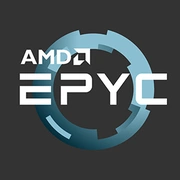AMD EPYC 9754S

The AMD EPYC 9754S processor is a powerful server CPU that packs a punch with its impressive specs. With a total of 128 cores and 128 threads, this processor is built to handle heavy workloads and demanding tasks with ease. The massive 256MB of L3 cache further enhances its performance, allowing for fast data access and reduced latency.
The TDP of 360W reflects the processor's high power consumption, but the trade-off is the incredible processing power and efficiency it provides. This makes it well-suited for data centers and enterprise-level applications where performance is key.
In real-world usage, the EPYC 9754S excels in multi-threaded applications, virtualization, and workloads that require high parallel processing capabilities. Its performance in terms of compute, memory, and I/O is unmatched, making it a go-to choice for server deployments that require reliability and power.
Overall, the AMD EPYC 9754S is a top-of-the-line server processor that delivers exceptional performance and scalability. While it may not be suitable for every use case due to its high power consumption, for those that require the utmost in processing power and efficiency, this processor is a clear winner.
Basic
Label Name
AMD
Platform
Server
Launch Date
June 2023
Code Name
Bergamo
CPU Specifications
Total Cores
?
Cores is a hardware term that describes the number of independent central processing units in a single computing component (die or chip).
128
Total Threads
?
Where applicable, Intel® Hyper-Threading Technology is only available on Performance-cores.
128
Basic Frequency
2.25GHz
Max Turbo Frequency
?
Max Turbo Frequency is the maximum single-core frequency at which the processor is capable of operating using Intel® Turbo Boost Technology and, if present, Intel® Turbo Boost Max Technology 3.0 and Intel® Thermal Velocity Boost. Frequency is typically measured in gigahertz (GHz), or billion cycles per second.
Up to 3.1GHz
L3 Cache
256MB
CPU Socket
?
The socket is the component that provides the mechanical and electrical connections between the processor and motherboard.
SP5
Technology
?
Lithography refers to the semiconductor technology used to manufacture an integrated circuit, and is reported in nanometer (nm), indicative of the size of features built on the semiconductor.
5 nm
TDP
360W
PCI Express Version
?
PCI Express Revision is the supported version of the PCI Express standard. Peripheral Component Interconnect Express (or PCIe) is a high-speed serial computer expansion bus standard for attaching hardware devices to a computer. The different PCI Express versions support different data rates.
PCIe 5.0 x128
Memory Specifications
Memory Type
?
Intel® processors come in four different types: Single Channel, Dual Channel, Triple Channel, and Flex Mode. Maximum supported memory speed may be lower when populating multiple DIMMs per channel on products that support multiple memory channels.
DDR5
Memory Channels
?
The number of memory channels refers to the bandwidth operation for real world application.
12
Bus Speed
Up to 4800MT/s
Share in social media
Or Link To Us
<a href="https://cputronic.com/en/cpu/amd-epyc-9754s" target="_blank">AMD EPYC 9754S</a>